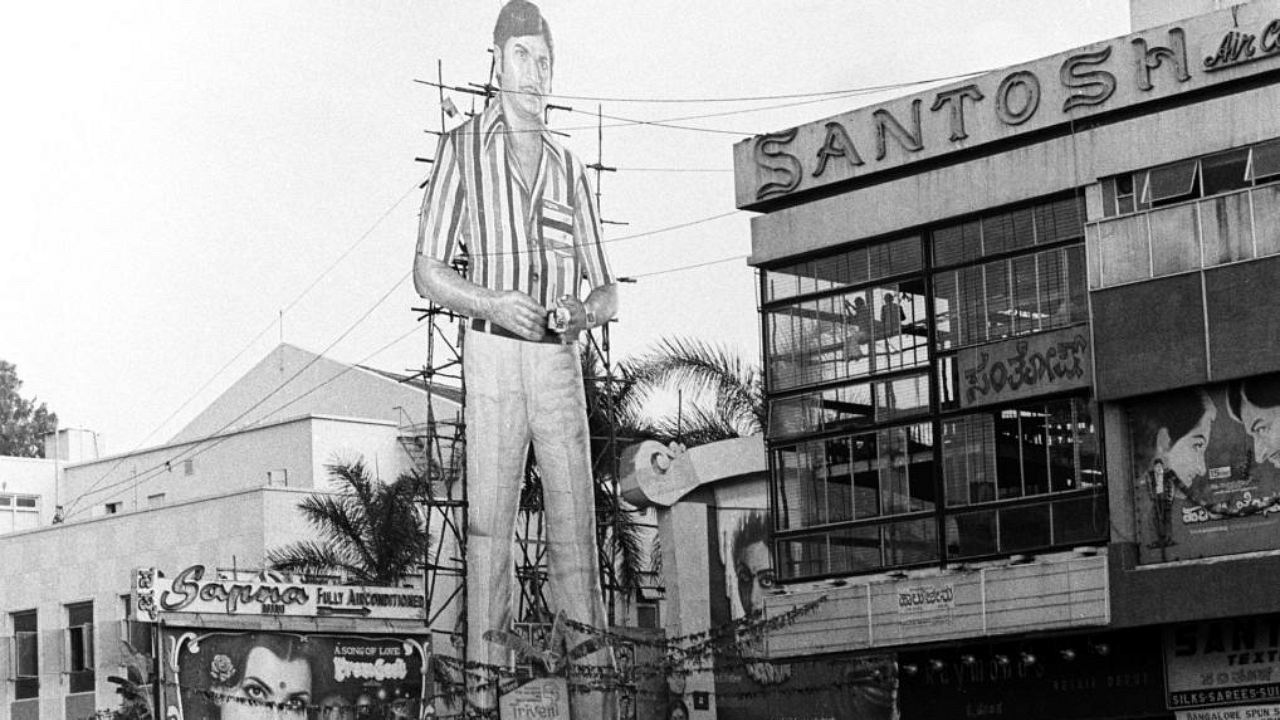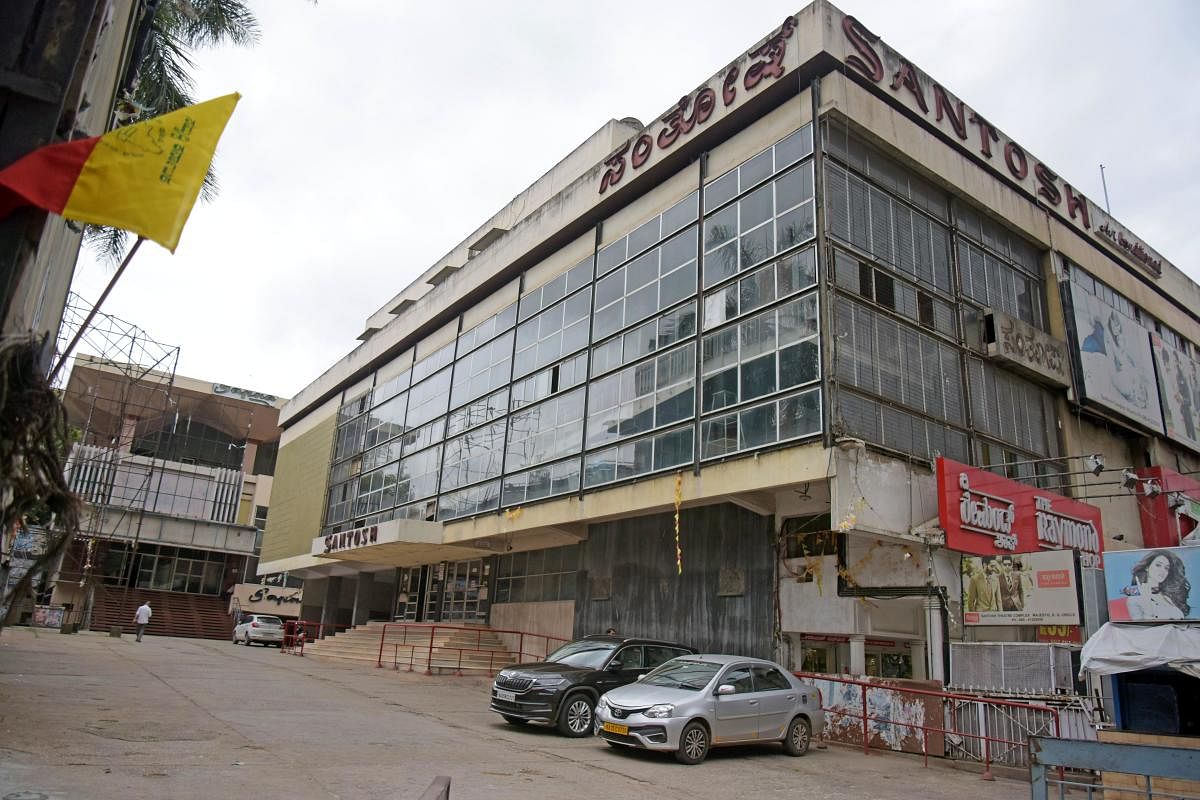

In Bengaluru, a gold class ticket for the latest ‘Spiderman’ film costs Rs 878 today. In the 1950s, you could watch a Hollywood film for just four annas (25 paise). That is an astronomical increase, and just one of the many reasons veteran film buffs miss the good old days.
With the advent of multiplexes and online streaming, the traditional movie-watching experience is fading into history. The decline of old-style cinema halls, also called talkies and theatres, began in the 2000s, and the numbers plunged even further during the pandemic. DH on Saturday brings you nostalgic stories about the transition from across Karnataka.
H N Narahari Rao, a well-known name in the film society movement in Karnataka, is 81. He vividly recalls watching his first movie on the big screen — a Tamil film scripted by Karunanidhi and starring Sivaji Ganesan called ‘Parasakthi’. He was just 12 when he was taken by his parents to Super Theatre, near the City Railway Station. The theatre was razed in late 1970s.
Many of his generations watched British and Hollywood films at the theatres dotting the posh Bangalore Cantonment area. He recalls how he and his friends sold old newspapers and saved up to watch films such as ‘To Catch A Thief’, ‘Rear Window’, ‘The Man Who Knew Too Much’ and ‘Dr No’. Halls from that era that no longer exist: Empire, New Opera, Liberty, BRV, Plaza, Galaxy and Lido. In south Bengaluru, Shanthi and Nanda are now history. Swagath has transformed into a mall and multiplex, like Lido.
Narahari Rao, who founded the Suchitra Film Society in 1971, says, “If I missed a film in its first week in the Cantonment, I would watch it at Paramount near City Market. The ticket was cheaper at three and a half annas, and we would get a pan beeda if the counter had no change.”
Akhtar Begum, owner of Liberty theatre on M G Road, is an iconic name. She dressed elegantly, and was known for her hot-headedness. She would personally welcome regulars to her theatre. “She would spray attar on us,” he says. That personal touch is gone for good. Film buffs are greeted at the multiplexes with frisking and a search-down with a metal detector.
In the ’70s, Karnataka was known all over India for its clean, well-equipped theatres. Those glory days are gone, and the state today has just 506 active theatres, 125 down from 631 before the Covid outbreak. Gandhinagar, near the Kempegowda bus terminus in Bengaluru, is no longer a hub for film buffs.
A quick walk from the huge city railway station, it once had 22 cinema halls, a phenomenon unheard of anywhere else in the world. Only five remain — Triveni, Anupama, Movieland, Bhoomika, and Abhinay.
The footfalls are high in the area, thanks to the floating population. “That is why rents are high, and it is more profitable to close down theatres and build shopping complexes,” says Arun Kumar, owner of the Santhosh-Nartaki-Sapna complex, which recently stopped screening films.
Mysore’s golden era
Before the modern cafes became youth hang-outs, the Ice House inside Gayathri theatre in Mysuru was a happening place.
“The softie ice creams, mutton cutlets, rum cakes, and jellies were favourites of teenagers,” says M R Rajaram, owner. He is also the vice-president of the Karnataka Film Exhibitors Association.
Gayathri and Sangam are the two remaining prominent single screens in Mysuru. “I watched ‘Premaloka’ (1987) 18 times,” says Narayana Gowda C, head of the Mysuru Hotel Owners Association, and a movie buff. “I was a teenager and the film’s songs were fantastic. I love movies with good songs. I watched Vishnuvardhan’s ‘Bandhana’ 15 times. Back then, not everybody owned a TV”.
And ‘Mahabharata’ and ‘Ramayana’ were the only sources of visual entertainment, explains the self-confessed Rajkumar fan.
The pandemic claimed three iconic theatres Saraswathi, Lakshmi, and Shanthala.
Sterling in Vidyaranyapura, famous for screening Hollywood movies, is shutting down by the end of January.
Mysuru has just 11 single screen theatres today, as against 24 in the ‘90s. Gayathri and Sangam have embraced the latest technology, and proudly claim they are the only ones in Karnataka to have Dolby CP 950 sound.
Not all theatres are in a position to upgrade in a big way. “The revenue model is not working,” says Rajaram. Shivamogga is also struggling to maintain its rich single-screen legacy.
Kerala, Tamil Nadu, and Andhra have preserved the single screen culture better than Karnataka. They have more than 1200 single screens each and are doing good as the state government supports them in many ways, points out Rajaram.
“Tamil Nadu has 1,500 single screens and new ones are coming up,” he says.
North Karnataka
Multiplexes coming up in Hubballi promised cleaner interiors, but not everyone is enthusiastic about the change. Amit T, a marketing professional in his 40s, can’t adapt to the change. “I used to watch two movies a week in my younger days. Now it is years between two films,” he says.
The Apsara and Sudha complex, in Hubballi, is still going strong. “These are among the oldest theatres in the city. The three Khans of Bollywood (Aamir, Salman, and Shah Rukh) had burst on the scene and we watched most of their films. Recently, we had a friends’ reunion and we watched the sports drama ‘83’ in Apsara. We felt so happy to see the aquarium inside still intact,” he says.
Raj Kapoor visited Hubballi, Dharwad and Belagavi to celebrate the success of his 1964 film ‘Sangam’. Dilip Kumar also toured the cities. Kannada stars have also taken out processions to meet and greet their fans.
North Karnataka patronises mainstream films in a big way, but the cinema halls aren’t thriving like they used to. From 18, Hubballi has just six single-screen theatres now. Dharwad has four, down from seven.
“The major decline happened when the satellite technology set in,” says R R Odugoudar, chairman of the Karnataka Film Exhibitors Federation. Srinivas and Padma in Dharwad, Sanjotha, Sujatha in Hubballi, and Swaroop Narthaki in Belagavi are keeping the flag of standalone culture flying.
Why the decline?
Real estate: Rent from distributors is too low. Theatre owners want a share in the box office collections. That is a model followed by multiplexes.
Cut out the red tape: Owners want quicker and less cumbersome permissions to renovate theatres.
Star films: They believe a consistent supply of blockbusters will help them return to their glory days.
Better audience: Theatre owners also say more people should watch smaller films.
Covid impact
The number of active single-screen theatres in Karnataka has come down from 631 before the pandemic to 506.
Watch the latest DH Videos here: